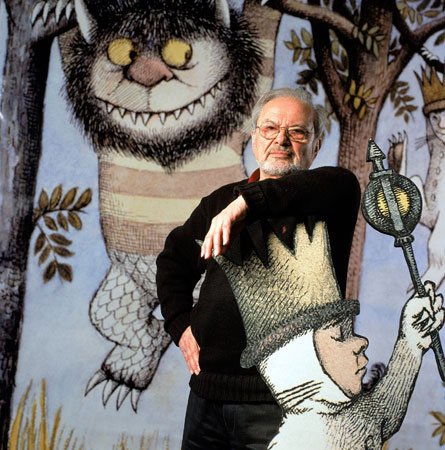
Writer and illustrator Maurice Sendak died this morning at the age of 83 from complications following a stroke. Best known for his 1963 children’s book Where the Wild Things Are, his partner of 50 years was psychoanalyst Eugene Glynn, who died in 2007. After Glynn’s death, Maurice donated $1 million to the Jewish Board of Family and Children’s Services in honour of Glynn, who treated patients there.
On his sexuality:
“All I wanted was to be straight so my parents could be happy. They never, never, never knew.”
On the favourite letter he ever received:
“Once a little boy sent me a charming card with a little drawing on it. I loved it. I answer all my children’s letters — sometimes very hastily — but this one I lingered over. I sent him a card and I drew a picture of a Wild Thing on it. I wrote, “Dear Jim: I loved your card.” Then I got a letter back from his mother and she said, “Jim loved your card so much he ate it.” That to me was one of the highest compliments I’ve ever received. He didn’t care that it was an original Maurice Sendak drawing or anything. He saw it, he loved it, he ate it.”
On e-books:
“I hate them. It’s like making believe there’s another kind of sex. There isn’t another kind of sex. There isn’t another kind of book! A book is a book is a book.”
On children:
“From their earliest years children live on familiar terms with disrupting emotions, fear and anxiety are an intrinsic part of their everyday lives, they continually cope with frustrations as best they can. And it is through fantasy that children achieve catharsis. It is the best means they have.”
“I refuse to lie to children. I refuse to cater to the bullshit of innocence.”
On politics:
“These Republican schnooks would be comical if they weren’t not funny.”
On fantasy:
“I believe there is no part of our lives, our adult as well as child life, when we’re not fantasizing, but we prefer to relegate fantasy to children, as though it were some tomfoolery only fit for the immature minds of the young. Children do live in fantasy and reality; they move back and forth very easily in a way we no longer remember how to do.”
“There is no such thing as fantasy unrelated to reality.”
On life:
“There must be more to life than having everything!”
 Why you can trust Xtra
Why you can trust Xtra


